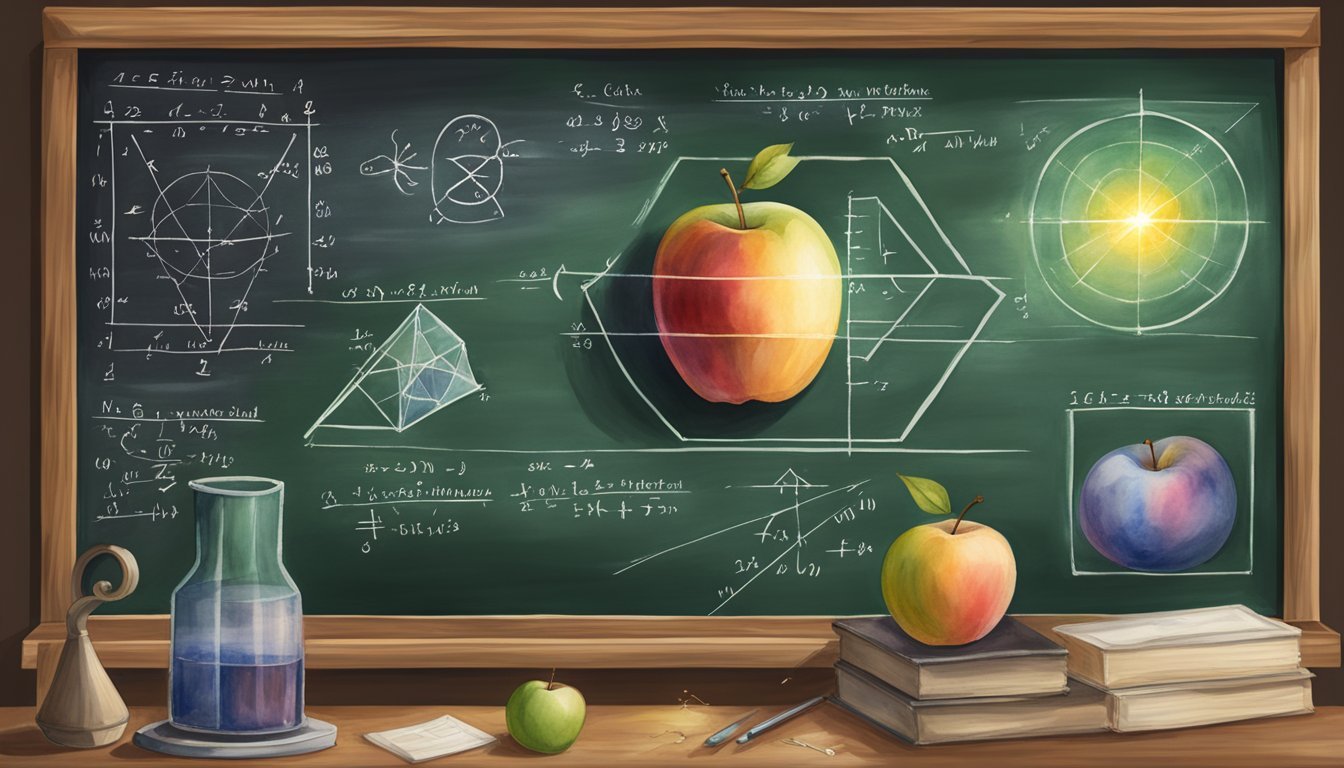Life and Legacy of Isaac Newton
Isaac Newton, born in Woolsthorpe, England, was a monumental figure in the realms of mathematics and science, leaving a legacy that spans centuries.
His journey from a small town to the hallowed halls of the University of Cambridge to recognition as a giant of scientific thought, laid the foundation for modern physics.
Early Beginnings and Cambridge
Isaac Newton was born on December 25, 1642, to his father, also named Isaac Newton, who was a prosperous farmer, and his mother Hannah Ayscough.
Tragically, Newton’s father passed away before his birth, and at the age of three, his mother remarried to a minister named Barnabas Smith, which led to a period of separation between Newton and his mother as he was left in the care of his maternal grandmother.
Showing signs of intelligence early on, Newton attended the King’s School in Grantham before heading to the University of Cambridge’s Trinity College in 1661 as a subsizar – a role which required him to perform tasks for wealthier students in exchange for education.
During his time at Cambridge, Newton was introduced to the works of prominent philosophers and scientists such as Aristotle, Descartes, and Galileo, which influenced the development of his own theories in physics and mathematics.
He earned his bachelor’s degree in 1665 but had to return to Woolsthorpe when the university closed due to the Great Plague.
It was during this period, often referred to as his “annus mirabilis” or “year of wonders,” that Newton made significant breakthroughs in calculus, optics, and gravitation.
Achievements and Honors
Newton’s work fundamentally changed the landscape of science.
In 1687, he published his most renowned work, “Philosophiæ Naturalis Principia Mathematica,” often simply called the Principia.
In this groundbreaking book, he described the three laws of motion, which laid the bedrock of classical mechanics, and the law of universal gravitation, which cemented his reputation as a revolutionary figure in astronomy and physics.
He held the prestigious Lucasian Professor of Mathematics position at the University of Cambridge and in 1703 became the President of the Royal Society, a fellowship of many of the world’s most eminent scientists.
Newton was knighted by Queen Anne in 1705, which is when he acquired the title “Sir.” Later in his life, Newton moved to London and took up a position as Warden and then Master of the Royal Mint, reforming England’s currency and taking on counterfeiters.
Even after his death on March 31, 1727, Sir Isaac Newton’s impact persevered, and he was honored with a burial in Westminster Abbey.
He continues to be recognized as one of the most influential geniuses in the history of science, not only for his discoveries but also for his role in shaping the way we understand our world.
From his humble beginnings in a small Lincolnshire village to his towering status as a leading figure of the Scientific Revolution, Newton’s legacy is one of enduring greatness.
Scientific Contributions and Discoveries

Isaac Newton’s paramount work laid the foundations for classical mechanics and optics, and he is widely acknowledged for formulating the laws of motion and gravity.
His mathematical innovations also contributed significantly to the field of calculus.
Mathematics and Physics
Newton’s most celebrated work, Philosophiæ Naturalis Principia Mathematica, often referred to as the Principia, introduced the laws of motion and universal gravitation.
This work described how objects move through space and time and included Newton’s three laws of motion, which have become fundamental in the study of physics.
His mathematical studies led to the development of a new type of mathematics called calculus.
Optics and Light
In optics, Newton’s experiments with prisms were groundbreaking.
He demonstrated how white light is composed of the same spectrum of colors that appear in a rainbow, and refuted the theory that colored light was a mixture of light and darkness.
His detailed research was elaborated in his work Opticks, and his construction of the first practical reflecting telescope revealed the effectiveness of mirrors instead of lenses, circumventing the issue of chromatic aberration typical in refracting telescopes of his time.
Legacy in Science
Isaac Newton’s contributions have had an enduring impact on the physical sciences.
His laws of motion remain an integral part of physics curricula.
His discovery of the principles of gravity explained not only the fall of an apple but also the motion of planets and celestial bodies.
Newton’s work established a precedent for scientific methodology, emphasizing empirical evidence and the application of mathematical roperties to understand and describe the universe.
His insights have paved the way for countless scientific explorations and have been built upon by many scientists, including Albert Einstein in his theory of general relativity.

